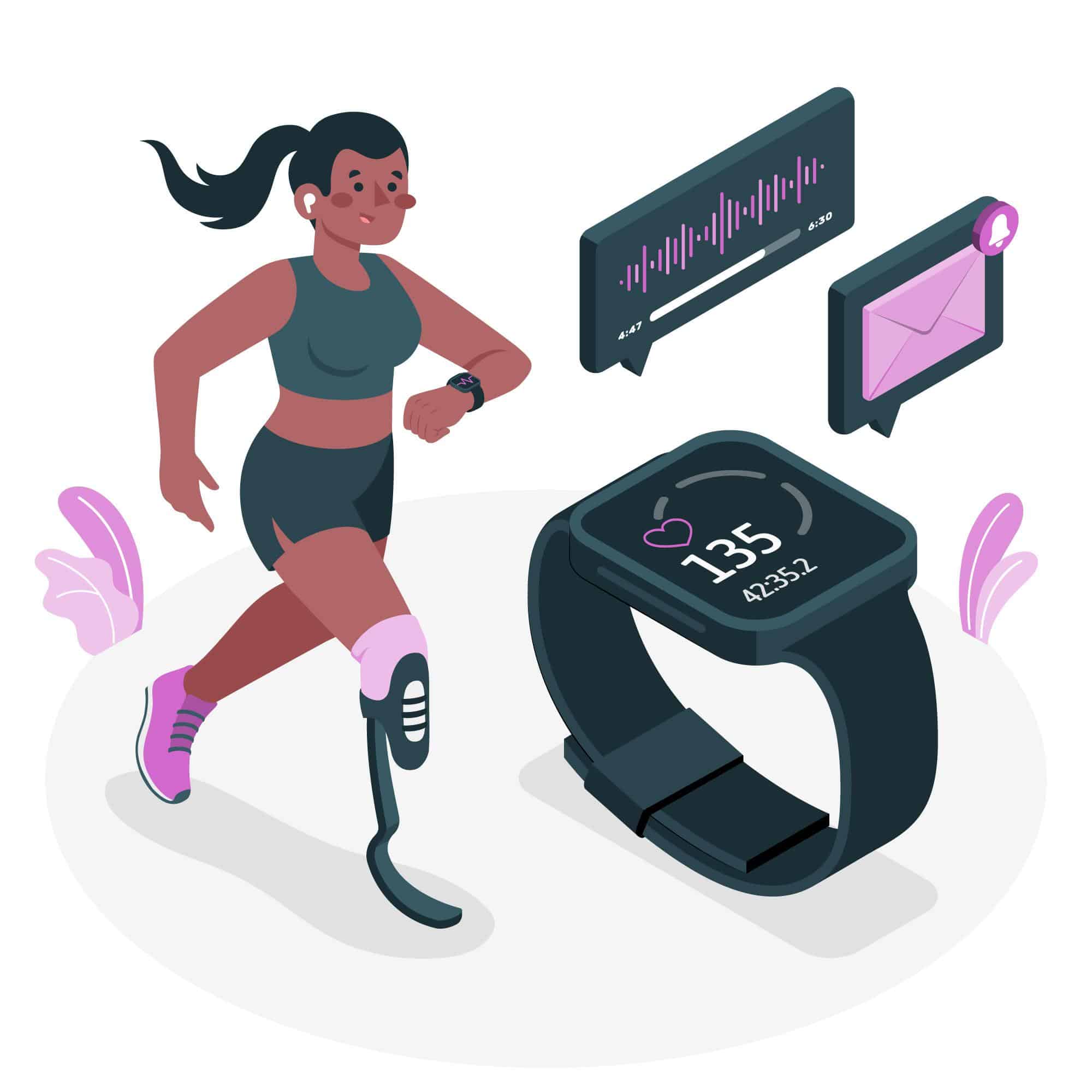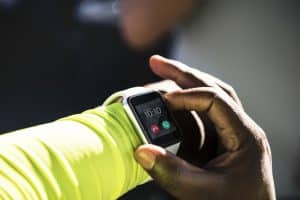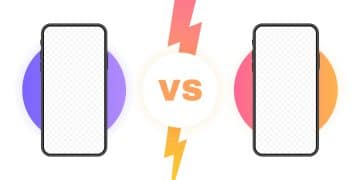Best Smartwatch Buying Guide India 2025: Compare Top Models for Every Budget & Lifestyle

The Evolution of Smartwatches in India
Growth of Smartwatch Adoption in India from Luxury to Mainstream
Initially, smartwatches in India were considered luxury gadgets, accessible to only a niche segment of the population. With models like the Apple Watch and Samsung Galaxy Watch leading the premium market, early adopters were predominantly tech-savvy individuals or high-income professionals. However, as technology evolved, the landscape began to change.
Mass-market brands like boAt, Noise, and Fire-Boltt entered the scene, democratizing smartwatches and making them more accessible to the average consumer. The significant reduction in prices without compromising on essential features played a crucial role in this transition. The vibrant marketing campaigns and celebrity endorsements further accelerated the adoption, making smartwatches a common sight even beyond the urban hotspots into tier-2 and tier-3 cities.
How Smartwatches Have Become More Affordable and Feature-Rich
Several factors contributed to the affordability and enriched features of smartwatches in India. Manufacturing efficiencies, economies of scale, and intense competition among national and international players ensured that prices steadily dropped while features improved significantly. Today, even budget models offer features like heart rate monitoring, sleep tracking, and notifications, which were once confined to premium models.
Moreover, advancements in materials and battery technology have resulted in lightweight, durable, and more power-efficient devices. Customizable watch faces, interchangeable bands, and a myriad of sensor options make today’s smartwatches versatile tools that attract a broader spectrum of users.
Current Market Trends and Consumer Preferences in India
As of 2025, the Indian smartwatch market shows a sharp inclination towards fitness and health-related functionalities. Consumers prioritize health-centric features like SpO2 monitoring, ECG, and advanced fitness tracking capabilities. Young professionals seek smartwatches with robust app ecosystems and seamless integration with smartphones for notifications, calls, and productivity apps.
Beyond functionality, style remains a significant deciding factor. The availability of various customizable options and sleek designs cater to young, style-conscious users. With more brands participating in seasonal sales events and offering attractive financing options, smartwatches have slid comfortably into the mainstream gadget category.
These evolving market dynamics emphasize the importance of understanding user profiles effectively, matching features to specific lifestyle needs, and ensuring consumers are better equipped to make informed decisions when choosing a smartwatch.
This natural progression encourages a keen understanding of specific user profiles and necessity alignment, which are vital when matching a smartwatch with your lifestyle needs.

Understanding Your User Profile
Different User Personas
Identifying your user profile is crucial in choosing the right smartwatch. Here are some common personas:
Fitness Enthusiasts
For those who prioritize fitness, a smartwatch with robust health metrics is essential. Features such as heart rate monitoring, SpO2 tracking, and workout modes can be indispensable.
Professionals
Professionals need a smartwatch that integrates seamlessly with their busy schedules. They should look for notification management, calendar integration, and long battery life.
Health-Conscious Users
Health-conscious users focus on well-being. They may value sleep tracking, stress monitoring, and guided breathing exercises.
Style-Focused Users
For the style-conscious, aesthetics matter. Watches with customizable faces, interchangeable bands, and sleek designs are a must.
Matching Smartwatch Features to Lifestyle Needs
To match features with your lifestyle, consider:
- Activity Tracking: If you’re active, look for tracking options for running, cycling, and swimming.
- Notifications and Apps: Professionals should ensure their watch syncs seamlessly with their email and apps.
- Health Metrics: Health-focused users should prioritize watches with advanced health sensors.
- Design: Fashionistas might prioritize design over functionality.
Importance of Identifying Primary Use Cases Before Purchase
Knowing your primary use case helps narrow down options:
- Do you need a fitness partner? Prioritize health and activity tracking.
- Looking for a productivity tool? Opt for great notification management and app support.
- Health First? Ensure comprehensive health monitoring features.
- Style Statement? Choose a watch that matches your fashion acumen.
Whatever your profile, identifying these key aspects will guide you towards the perfect smartwatch.
Essential Features to Consider
Core Features
When choosing a smartwatch, it’s critical to evaluate the core features that align with your primary needs.
Display Types
Smartwatches come with varied display types such as LCD, OLED, and AMOLED. OLED and AMOLED are popular for their vibrant colors and deep blacks, which can enhance the overall viewing experience. However, these displays can consume more battery compared to LCDs.
Battery Life
Battery life varies across models. Some smartwatches offer impressive battery performance lasting up to a week, while others might need daily charging. Prioritize a watch based on your routine and usage patterns to avoid inconvenient downtime.
Water Resistance
Water resistance is vital, especially for fitness enthusiasts and swimmers. Most modern smartwatches offer water resistance from IP68 (suitable for splashes) to up to 5 ATM (safe for swimming). Always check the specific rating based on your activity level.
Health Sensors
Health sensors are a significant feature for many users. Common sensors include heart rate monitors, SpO2 sensors, and even ECG functionality. These can be invaluable for health monitoring and personalized insights.
Compatibility with Smartphones and Operating Systems
Smartwatches need to sync seamlessly with your smartphone. Ensure compatibility with your device, whether it’s an iOS or Android. Not all features may work with every smartphone, so it’s crucial to verify ahead of purchase.
Advanced Features
Advanced features further differentiate smartwatches:
- GPS: Essential for accurate tracking during outdoor activities like running and cycling.
- Calling: Allows you to make and receive calls directly from your smartwatch, offering a hands-free experience.
- Music Storage: Convenient for workouts, allowing you to train without carrying your phone.
- Payment Options: Features like NFC allow for contactless payments directly through your watch, adding an extra layer of convenience.
Understanding these aspects can help you make a purchase that truly aligns with your needs.
Operating Systems and Interfaces
Selecting the right smartwatch also involves understanding the various operating systems (OS) and user interfaces (UI) available. This chapter will delve into the differences, pros, and cons of major OS like Wear OS, watchOS, RTOS, and proprietary systems used by brands like Amazfit, Realme, and boAt.
Wear OS vs. watchOS vs. RTOS
Wear OS
Wear OS, developed by Google, offers a highly customizable and versatile platform. It’s compatible with many Android devices and provides access to a wide range of third-party apps through the Google Play Store.
Pros:
- Extensive app ecosystem.
- Integration with Google services like Maps and Assistant.
- More hardware choices.
Cons:
- Battery life can be inconsistent.
- Performance may vary across different hardware.
watchOS
watchOS, the exclusive operating system for Apple Watch, is known for its seamless integration with iOS devices. It boasts an intuitive UI and is packed with features aimed at enhancing the user experience.
Pros:
- Exceptional integration with Apple devices.
- Smooth and intuitive user interface.
- Reliable performance and battery life.
Cons:
- Limited to Apple devices.
- Higher price point.
RTOS
Real-Time Operating System (RTOS) is used by many budget and mid-range smartwatches. It’s designed for efficiency and reliability, focusing more on basic functionality rather than extensive apps.
Pros:
- Efficient battery usage.
- Stability and reliability.
- Cost-effective.
Cons:
- Limited app support.
- Simple user interface lacking advanced features.
Proprietary Systems: Pros and Cons
Amazfit
Amazfit, powered by Zepp OS, offers a balance between features and battery efficiency. It provides essential functions and some advanced features tailored to fitness enthusiasts.
Pros:
- Great for fitness tracking.
- Good battery life.
- Affordable pricing.
Cons:
- Limited third-party app support.
- Basic user interface.
Realme
Realme uses a proprietary OS focusing on user-friendly features and smooth operation. It’s typically found in their more budget-friendly options.
Pros:
- Easy to use.
- Good performance for the price.
- Decent app support.
Cons:
- Basic functionalities.
- Limited customization.
boAt
boAt employs a proprietary OS that emphasizes core smartwatch functions without the complexity. It’s built for simplicity and effectiveness, particularly in budget models.
Pros:
- Simple and user-friendly.
- Efficient battery life.
- Cost-effective.
Cons:
- Lacks advanced features.
- Minimal third-party app integration.
User Experience and App Ecosystem
The user experience is heavily influenced by the operating system and the available apps. For example, Wear OS and watchOS offer robust ecosystems with a wide variety of apps. Conversely, RTOS and proprietary systems tend to have fewer apps and features, focusing on core functionality. Essential features like notifications, health tracking, and GPS are common across platforms, but the depth and customization possibilities vary.
Understanding these aspects can significantly affect your smartwatch experience. Choosing the right OS depends on your preferences, whether you value a rich app ecosystem, seamless device integration, or more straightforward functionality.
Top Smartwatch Recommendations by Budget
Budget Segment (Under ₹5000)
If you’re on a tight budget but still want a decent smartwatch, India’s market offers some solid choices under ₹5000.
- boAt: Known for its stylish designs and reliable features, boAt’s budget smartwatches often include fitness tracking, heart rate monitoring, and good battery life. One of their popular options is the boAt Xtend, which offers an array of health-tracking metrics and a robust build.
- Noise: Noise has a range of affordable options that don’t skimp on essential features. With watches like the Noise ColorFit Pro 3, users can enjoy a high-resolution display, multiple sports modes, and sleep tracking. Noise watches are also known for their user-friendly interfaces.
- Fire-Boltt: This emerging brand offers excellent value for money. Models like the Fire-Boltt Talk come with features such as Bluetooth calling, SpO2 monitoring, and a sleek design. Fire-Boltt watches are becoming popular among young adults and students for their affordability paired with useful features.
Mid-range Segment (₹5000-15000)
Mid-range smartwatches provide a balance between cost and advanced functionalities. Here are some options available in this price bracket.
- Amazfit: Amazfit smartwatches are well-regarded for their fitness-centric features and sturdy design. The Amazfit GTS 2 Mini, for instance, offers a vibrant AMOLED display, comprehensive health tracking (including blood oxygen levels and stress monitoring), and impressive battery life.
- OnePlus: OnePlus is another brand that has made significant strides in the mid-range smartwatch market. The OnePlus Watch stands out with its sleek design, long battery life of up to two weeks, and seamless integration with OnePlus smartphones. It also includes fitness tracking, SpO2 monitoring, and different exercise modes.
Premium Segment (Above ₹15000)
For those who want the best in terms of technology and style, the premium segment offers top-tier smartwatches.
- Apple Watch Series: Apple’s smartwatches are the gold standard in the industry. The Apple Watch Series 7, for example, boasts an always-on Retina display, ECG and blood oxygen apps, comprehensive fitness tracking, and tight integration with the Apple ecosystem. It’s ideal for users deeply embedded in the Apple environment.
- Samsung Galaxy Watch Series: Samsung’s Galaxy Watch 4 is a formidable contender. It features a sleek design, advanced health monitoring (including body composition analysis), and the new Wear OS powered by Samsung. It’s perfect for Android users who want a high-end smartwatch with a rich set of features.
Selecting the right smartwatch involves balancing your needs with your budget. Whether you aim for affordability, a mix of features and cost, or premium functionalities, there’s a smartwatch in the Indian market that aptly fits your criteria.
Where to Buy and Get the Best Deals
Reliable Online and Offline Purchasing Channels in India
When looking to buy a smartwatch in India, you have several reliable options to consider. Online platforms are convenient and often offer detailed customer reviews and ratings. Popular websites include:
- Amazon India: Known for its vast selection and reliable delivery.
- Flipkart: Another trusted platform with frequent sales and deals.
- Tata CliQ: Offers genuine products from authorized sellers.
For those who prefer to buy offline, consider visiting authorized brand stores, large electronic retail chains like Croma and Reliance Digital, and even local gadget shops. These stores often provide the advantage of physically inspecting the product before purchase.
Tips for Identifying Genuine Products and Avoiding Counterfeits
Buying genuine smartwatches is crucial for ensuring quality and warranty support. Here are some tips:
- Buy from Authorized Sellers: Whether online or offline, make sure the seller is authorized by the brand.
- Check for Brand Warranty: Genuine products come with a brand warranty. Look for this information on the packaging and product listings.
- Inspect Packaging and Product: Authentic smartwatches have high-quality packaging and a well-finished product. Counterfeits usually have subpar finishes and packaging anomalies.
- Read Reviews: Customer reviews can be a goldmine for identifying genuine sellers and products.
Best Times to Buy and How to Track Price Drops
Timing your purchase can save you money. Here are some tips for getting the best deals:
- Festive Sales: Look out for major sales during Diwali, New Year, and other festivals. Both online and offline stores offer significant discounts.
- Seasonal Sales: Platforms like Amazon and Flipkart have annual sales, such as the Amazon Great Indian Festival and Flipkart Big Billion Days.
- Clearance Sales: Towards the end of the year or before new model launches, retailers offer clearance sales.
- Deal Trackers and Alerts: Use websites and apps like Pricebaba, MySmartPrice, and even price tracking extensions like Honey to get alerts on price drops.
Keeping these tips in mind can help you find the best deals on your smartwatch purchase. Up next, let’s delve into making the final decision, ensuring your choice balances features, budget, and long-term value.
Making Your Final Decision
Balancing Features with Budget Constraints
When it comes to picking the perfect smartwatch, balancing features and budget is crucial. While it’s easy to be dazzled by high-end models’ flashy features, remember that many affordable options deliver excellent value for their price.
For example, fitness enthusiasts might find the health tracking features in a budget smartwatch like those from boAt or Noise to be sufficient. Professionals who need seamless integration with their smartphones may look into mid-range options from Amazfit or OnePlus. On the other hand, those looking for high-end features and reliability might prefer the premium range offered by Apple or Samsung.
Long-term Value Considerations and Warranty Importance
Investing in a smartwatch isn’t just about the initial purchase; consider long-term value. A slightly higher upfront cost can often lead to a better experience over time thanks to superior build quality, longer software support, and more advanced features.
Warranty is another critical factor. Ensure your smartwatch comes with a reliable warranty to protect against defects and malfunctions. Brands like Apple and Samsung provide excellent customer service and robust warranties, offering peace of mind with your purchase.
Key Factors for Making an Informed Purchase Decision
To make an informed decision, prioritize these factors:
- Primary Use Case: Identify what you’ll primarily use the smartwatch for—fitness, professional use, health monitoring, or style.
- Compatibility: Ensure the smartwatch is compatible with your smartphone. If you’re using an Android phone, Wear OS might be ideal, while iPhone users should lean towards watchOS.
- Features: Decide which features are non-negotiable for you. Whether it’s GPS for running, heart rate monitoring for health, music storage, or mobile payments, make sure these are included in your desired model.
- User Reviews: Check user reviews and ratings to gauge the real-life performance of the smartwatch.
- After-sales Service: Consider the availability of after-sales services and customer support.
By carefully evaluating these aspects, you can ensure that your smartwatch purchase meets your needs and fits your lifestyle.
With your key factors in mind, you’re well on your way to finding the perfect smartwatch.






